《大話設計模式》Python版程式碼實現
一、簡單工廠模式
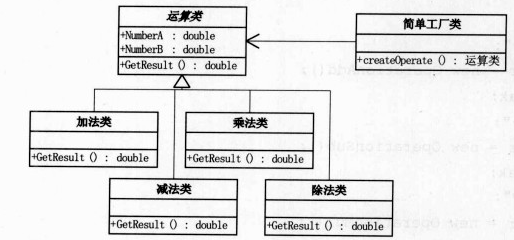
模式特點:工廠根據條件產生不同功能的類。
程式例項:四則運算計算器,根據使用者的輸入產生相應的運算類,用這個運算類處理具體的運算。
程式碼特點:C/C++中的switch...case...分支使用字典的方式代替。
使用異常機制對除數為0的情況進行處理。
-
class Operation(object): -
def get_result(self): -
pass -
class Add(Operation): -
def get_result(self): -
return self.op1+self.op2 -
class Sub(Operation): -
def get_result(self): -
return self.op1 - self.op2 -
class Mul(Operation): -
def get_result(self): -
return self.op1 * self.op2 -
class Div(Operation): -
def get_result(self): -
return self.op1 / self.op2 -
class Undef(Operation): -
def get_result(self): -
print "no define operator" -
class Factory(object): -
operator = dict() -
operator["+"] = Add() -
operator["-"] = Sub() -
operator["*"] = Mul() -
operator["/"] = Div() -
def create_operator(self, ch): -
op = self.operator[ch] if ch in self.operator else Undef() -
return op -
def main(): -
print "*" * 30 -
op = raw_input("operator:") -
opa = input("a:") -
opb = input("b:") -
factory = Factory() -
cal = factory.create_operator(op) -
cal.op1 = opa -
cal.op2 = opb -
print cal.get_result() -
if __name__ == "__main__": -
while 1: -
main() -
pass
二、策略模式

模式特點:定義演算法家族並且分別封裝,它們之間可以相互替換而不影響客戶端。
程式例項:商場收銀軟體,需要根據不同的銷售策略方式進行收費
程式碼特點:不同於同例1,這裡使用字典是為了避免關鍵字不在字典導致bug的陷阱。
-
# _*_ coding:utf-8 _*_ -
import os -
class CashSuper(object): -
def accept_cash(self, money): -
return 0 -
class CashNormal(CashSuper): -
def accept_cash(self, money): -
return money -
class CashRebate(CashSuper): -
discount = 0 -
def __init__(self, ds): -
self.discount = ds -
def accept_cash(self, money): -
return money * self.discount -
class CashReturn(CashSuper): -
total = 0 -
ret = 0 -
def __init__(self, total, ret): -
self.total = total -
self.ret = ret -
def accept_cash(self, money): -
if money >= self.total: -
return money - self.ret -
else: -
return money -
class CashContext: -
def __init__(self, child_class): -
self.cs = child_class -
def get_result(self, money): -
return self.cs.accept_cash(money) -
def main(): -
print "*" * 30 -
money = input("money:") -
strategy = dict() -
strategy[1] = CashContext(CashNormal()) -
strategy[2] = CashContext(CashRebate(0.8)) -
strategy[3] = CashContext(CashReturn(300, 100)) -
ctype = input("type:[1]for normal,[2]for 80% discount [3]for 300 -100.") -
if ctype in strategy: -
cc = strategy[ctype] -
else: -
print "no define type. Use normal mode." -
cc = strategy[1] -
print "you will pay:%d" % (cc.GetResult(money)) -
if __name__ == "__main__": -
main()
三、裝飾模式

模式特點:動態地為物件增加額外的職責
程式例項:展示一個人一件一件穿衣服的過程。
程式碼特點:無
-
class Person(object): -
def __init__(self, name): -
self.name = name -
def show(self): -
print "dressed %s" % self.name -
class Finery(Person): -
component = None -
def __init__(self): -
super(Finery, self).__init__("") -
pass -
def decorate(self, ct): -
self.component = ct -
def show(self): -
if self.component is not None: -
self.component.show() -
class TShirts(Finery): -
def __init__(self): -
super(TShirts, self).__init__() -
pass -
def show(self): -
print "Big T-shirt " -
self.component.show() -
class BigTrouser(Finery): -
def __init__(self): -
super(BigTrouser, self).__init__() -
pass -
def show(self): -
print "Big Trouser " -
self.component.show() -
def main(): -
p = Person("somebody") -
bt = BigTrouser() -
ts = TShirts() -
bt.decorate(p) -
ts.decorate(bt) -
ts.show() -
if __name__ == "__main__": -
main()
四、代理模式
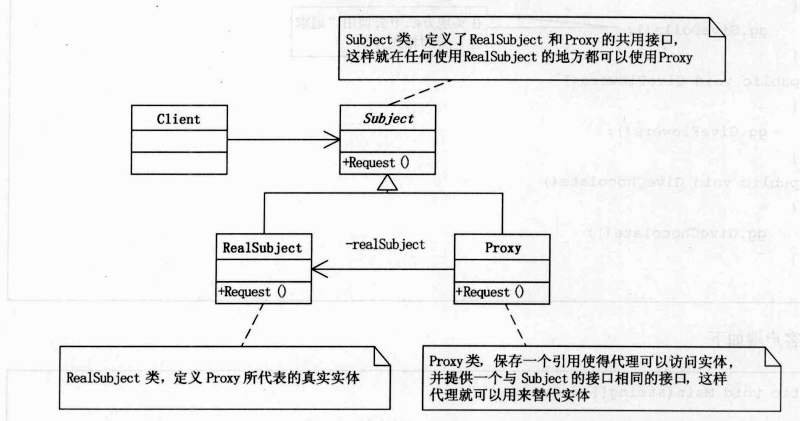
模式特點:為其他物件提供一種代理以控制對這個物件的訪問。
程式例項:同模式特點描述。
程式碼特點:無
-
class Interface(object): -
def request(self): -
return 0 -
class RealSubject(Interface): -
def request(self): -
print "Real request." -
class Proxy(Interface): -
def request(self): -
self.real = RealSubject() -
self.real.request() -
def main(): -
p = Proxy() -
p.request() -
if __name__ == "__main__": -
main()
五、工廠方法模式
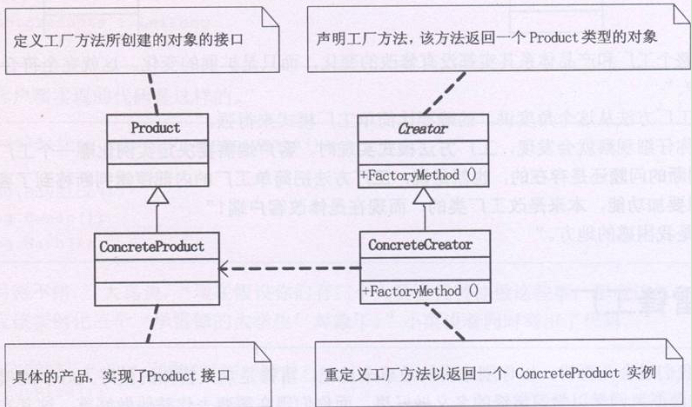
模式特點:定義一個用於建立物件的介面,讓子類決定例項化哪一個類。這使得一個類的例項化延遲到其子類。
程式例項:基類雷鋒類,派生出學生類和志願者類,由這兩種子類完成“學雷鋒”工作。子類的建立由雷鋒工廠的對應的子類完成。
程式碼特點:無
-
class LeiFeng(object): -
def Sweep(self): -
print "LeiFeng sweep" -
class Student(LeiFeng): -
def Sweep(self): -
print "Student sweep" -
class Volenter(LeiFeng): -
def Sweep(self): -
print "Volenter sweep" -
class LeiFengFactory: -
def CreateLeiFeng(self): -
temp = LeiFeng() -
return temp -
class StudentFactory(LeiFengFactory): -
def CreateLeiFeng(self): -
temp = Student() -
return temp -
class VolenterFactory(LeiFengFactory): -
def CreateLeiFeng(self): -
temp = Volenter() -
return temp -
def main(): -
sf = StudentFactory() -
s = sf.CreateLeiFeng() -
s.Sweep() -
sdf = VolenterFactory() -
sd = sdf.CreateLeiFeng() -
sd.Sweep() -
if __name__ == "__main__": -
main()
六、原型模式
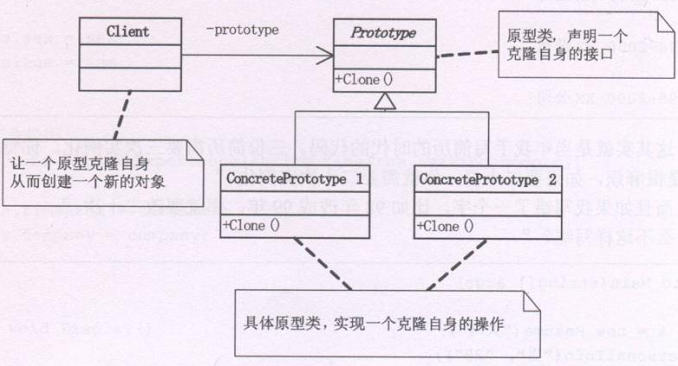
模式特點:用原型例項指定建立物件的種類,並且通過拷貝這些原型建立新的物件。
程式例項:從簡歷原型,生成新的簡歷
程式碼特點:簡歷類Resume提供的Clone()方法其實並不是真正的Clone,只是為已存在物件增加了一次引用。
Python為物件提供的copy模組中的copy方法和deepcopy方法已經實現了原型模式,但由於例子的層次較淺,二者看不出區別。
-
import copy -
class WorkExp: -
place="" -
year=0 -
class Resume: -
name = '' -
age = 0 -
def __init__(self,n): -
self.name = n -
def SetAge(self,a): -
self.age = a -
def SetWorkExp(self,p,y): -
self.place = p -
self.year = y -
def Display(self): -
print self.age -
print self.place -
print self.year -
def Clone(self): -
#實際不是“克隆”,只是返回了自身 -
return self -
def main(): -
a = Resume("a") -
b = a.Clone() -
c = copy.copy(a) -
d = copy.deepcopy(a) -
a.SetAge(7) -
b.SetAge(12) -
c.SetAge(15) -
d.SetAge(18) -
a.SetWorkExp("PrimarySchool", 1996) -
b.SetWorkExp("MidSchool", 2001) -
c.SetWorkExp("HighSchool", 2004) -
d.SetWorkExp("University", 2007) -
a.Display() -
b.Display() -
c.Display() -
d.Display() -
if __name__ == "__main__": -
main()
七、模板方法模式
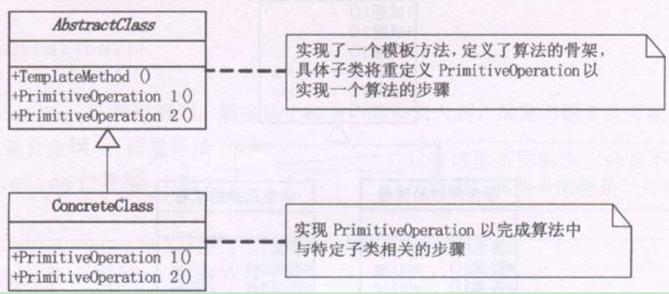
模式特點:定義一個操作中的演算法骨架,將一些步驟延遲至子類中。
程式例項:考試時使用同一種考卷(父類),不同學生上交自己填寫的試卷(子類方法的實現)
程式碼特點:無
